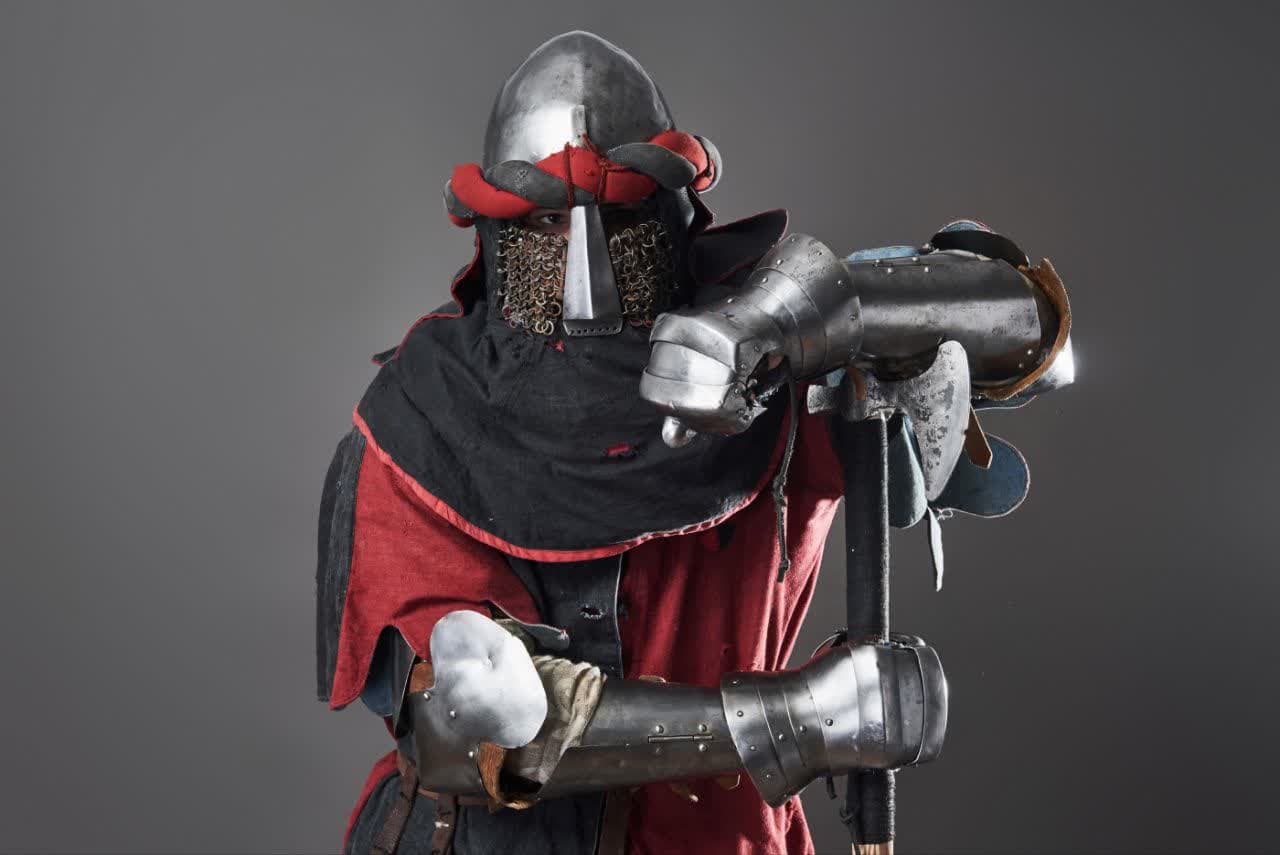The maul weapon, a formidable weapon in medieval warfare, is renowned for its ability to shatter armor and defenses with devastating force. This two-handed weapon features a heavy, blunt head mounted on a long handle, allowing warriors to deliver powerful strikes capable of crushing opponents and breaking through even the strongest defenses.
Table of Contents
Design and Construction:
The maul typically consists of a solid metal head, often made of iron or steel, attached to a sturdy wooden shaft. The head of the maul is cylindrical or rectangular in shape, with a flat or slightly convex striking surface. Unlike bladed weapons such as swords or axes, the maul lacks a sharp edge, instead relying on sheer mass and momentum to inflict damage. The handle of the maul is long enough to be wielded with both hands, providing the wielder with greater leverage and power.
Combat Effectiveness:
In battle, the maul’s primary advantage lies in its ability to deliver crushing blows that can bypass armor and cause significant blunt force trauma to opponents. While bladed weapons may glance off or become stuck in armored surfaces, the maul’s heavy head concentrates force into a small area, increasing the likelihood of penetrating armor and causing internal injuries. Furthermore, the maul’s blunt impact can fracture bones, crush helmets, and incapacitate adversaries with concussive force, making it a fearsome weapon on the battlefield.
Tactical Application:
The maul is most effective when wielded by strong, skilled warriors capable of generating powerful swings and precise strikes. It is often used as a weapon of choice by knights, foot soldiers, and siege engineers in medieval warfare, where it excels in breaching fortifications, breaking through shield walls, and overpowering armored opponents. In close combat, the maul’s weight and momentum can be used to knock enemies off balance, create openings in their defenses, and incapacitate them with staggering blows.
Notable Personalities
Throughout history, several notable figures have wielded the maul weapon with skill and ferocity, leaving a lasting impact on the battlefield and in the annals of warfare.
John Talbot, 1st Earl of Shrewsbury (1387-1453):
Known as one of the greatest English military commanders during the Hundred Years’ War, John Talbot was renowned for his valor and battlefield prowess. He often fought with a maul, using its crushing blows to devastating effect against his enemies.
Charles the Bold, Duke of Burgundy (1433-1477):
As a prominent figure in the Burgundian Wars, Charles the Bold was known for his imposing presence and martial skill. He favored the maul as a weapon of choice, using its brute force to break enemy formations and lead his troops to victory.
Sir John Chandos (c. 1320-1369):
A renowned English knight and military leader during the Hundred Years’ War, Sir John Chandos was famed for his bravery and tactical acumen on the battlefield. He wielded a maul with great proficiency, earning a reputation as a formidable opponent in combat.
Edward III of England (1312-1377):
As one of the most successful English monarchs of the medieval period, Edward III played a pivotal role in shaping the outcome of the Hundred Years’ War. He was known to equip his army with mauls, recognizing their effectiveness in breaking enemy lines and overcoming armored adversaries.
Richard III of England (1452-1485):
Despite his controversial reign, Richard III was a skilled military commander who led his forces into battle with determination and resolve. He reportedly favored the maul as a weapon of choice, utilizing its blunt force to crush the opposition and assert his authority on the battlefield.
These notable figures demonstrate the maul’s prominence as a weapon of choice among medieval warriors, showcasing its effectiveness in combat and its enduring legacy in the annals of military history.
Legacy and Symbolism of Maul Weapon:
Beyond its practical utility in combat, the maul holds a symbolic significance as a symbol of strength, power, and martial prowess. It is often depicted in heraldry, medieval art, and literature as a weapon wielded by heroic champions and legendary warriors. The maul’s association with brute force and unyielding resolve has cemented its place in history as a quintessential weapon of war, revered for its ability to shatter armor and defenses with relentless determination.

